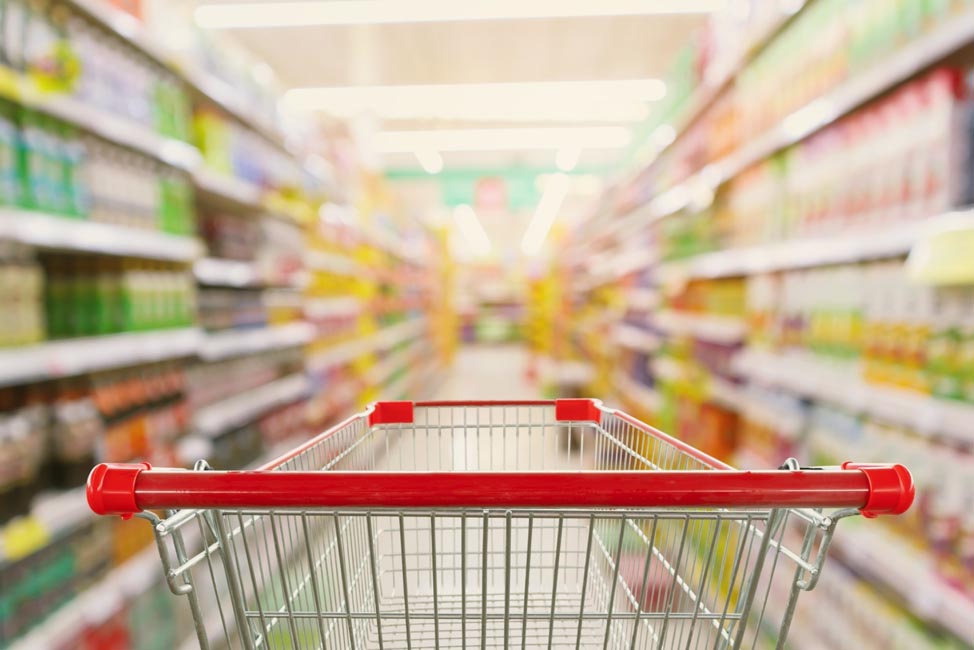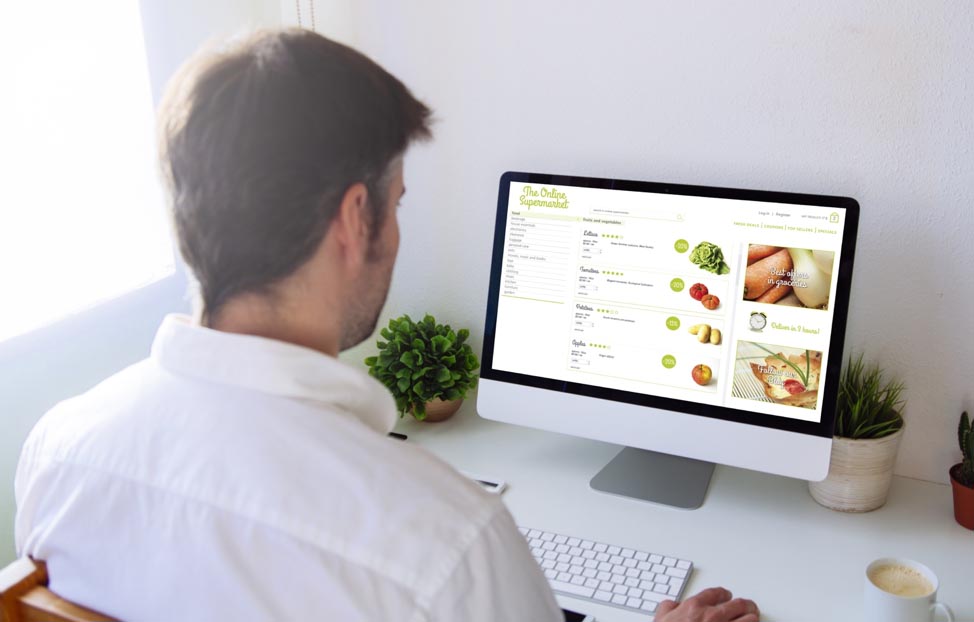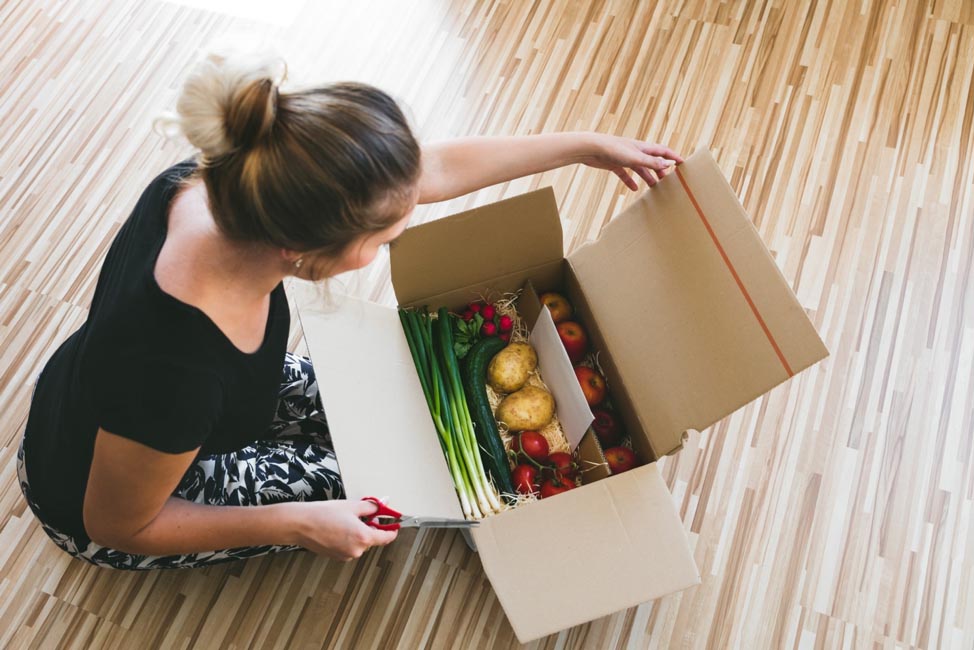
Online shoppers now have more options than ever when it comes to eCommerce consumable goods. But does the future of grocery shopping lie in the bricks or with the clicks? And, how should retailers adjust their packaging protocols for online shoppers?
In the UK, the eCommerce consumable market is off and running. The already huge market segment may double by 2023. But there are some significant differences between this side of the Pond and the other side. For example, UK population density is quite a bit higher, making space a premium. But in most parts of the United States, there is a large grocery store with a large parking lot near almost every major intersection.
Nevertheless, the U.S. eCommerce consumable market should expand significantly as well. What does this change mean for the American consumable packaging market?

A Look at the Numbers
To date, the eCommerce consumable experience has been a lot different in the United States. Only about 15 percent of U.S. consumers have purchased groceries online. Many of these online shoppers apparently did not like the experience. Most people who grocery shop online do so less than once a month, so the online market share is about 2 percent.
Old habits die hard, for both consumers and retailers. In most surveys, American grocery customers say they prefer buying in person, although they often cite no specific reason for their preference. Retailers have been slow to embrace online grocery sales as well. Many grocery retailers make up to 70 percent of their revenue from impulse purchases. These impulses are much easier to resist online.
Additionally, online grocery delivery is much more expensive for retailers. These deliveries go through multiple channels, thus multiplying costs in a very competitive market. Making matters worse, many retailers feel they must offer promotions to lure customers. These promotions make thin profit margins even thinner.
So, many retailers eschew online sales in favor of the in-store experience. As a result, many predict that the eCommerce consumable market will not flourish here. After all, we have been down this road before, and we know where that road ended. But there are some reasons to think that the online grocery reboot may be a lot different.
What Has Changed about the eCommerce Consumable Market
A few people may remember Urbanfetch, Webvan, Kozmo, and the other late-1990s on-demand delivery websites. These startups had a few years in the sun. Collectively, on-demand delivery sites raised about $6 billion from investors. Then the dot-com bubble burst in 2001, most of these companies went bankrupt, and that was that.
But there are some reasons to believe that On-Demand 2.0 will be a lot different from On-Demand 1.0. For example:
- Connectivity Rates: Internet penetration has increased exponentially since 1997. Smartphones increase this penetration rate even further. Additionally, many people still had dial-up internet in the late 1990s.
- Different Scale: Webvan’s corporate slogan was “Get Big Fast!” So, this company, and others like it, added infrastructure like crazy in anticipation of future demand that never materialized. Today’s on-demand providers are much leaner.
- No More Reckless Expansion: At the risk of harping on Webvan, the company launched in four new markets in its first year. Not to be outdone, Urbanfetch began international operations seven months after it opened its doors. Today’s delivery services, like Instacart and Postmates, take the opposite approach. These firms waited more than a year to expand into new U.S. markets.

There is also the green factor. According to the Environmental Protection Agency (EPA), shoppers drive about 42 billion miles a year to and from the grocery store. That’s ten times the distance between Earth and Pluto. As more fuel-efficient delivery trucks hit the road, the green factor becomes even more relevant.

How the Packaging Industry Should Respond
If retailers want to take advantage of these dynamics and create a different online shopping experience, the packaging must change. The eCommerce consumable market is mostly made up of consumers with high household incomes relative to the average. Within that market there is a willingness to pay a bit extra for better packaging, and that’s what they expect to receive.
Food and beverage companies need to consider a wider variety of factors when working with a packaging partner to meet the needs of the new grocery delivery markets. Bottles and jars are no longer sitting upright in case packs before they reach their final destination on the grocery store shelves. Containers need to be able to stand up to more jostling, handling and potential impacts without leaking or breaking before they get to their final destination. Amazon leads the market with its packaging requirements for liquids and creams, requiring a double seal to prevent product leakage.

The materials used in your packaging can play a huge role in making or breaking your ecommerce business. Many food and beverage companies are switching from glass to recyclable plastics to ensure their products arrive intact and prevent breakage claims.
Purveyors of perishable foods have also begun to think outside the box in terms of how their prepped foods are presented. Consumers are showing more and more proclivity towards convenience foods with a healthier twist. Think, fresh juices, ready-made soups, bone broths, grab and go lunches, etc. The packaging for these items has expanded well beyond clamshells and deli containers as companies look to stand out from the crowd with better, sharper, and more differentiated branding. Durable plastics tamper evident seals, and screw top closures that won’t pop open in transit are always a win.
And as always, the more attractive products are, the more likely consumers are to buy them. Given the potential growth in this domestic market and the proven growth overseas, eCommerce consumable packaging is an investment that’s worth making.







































